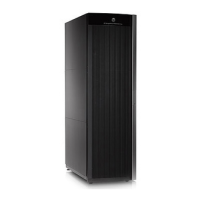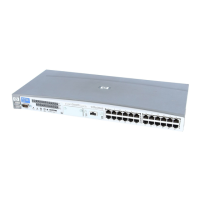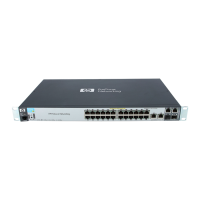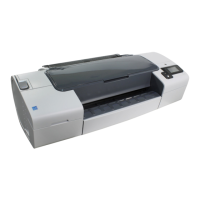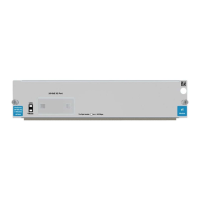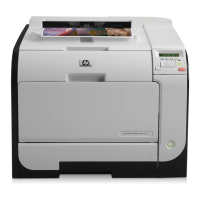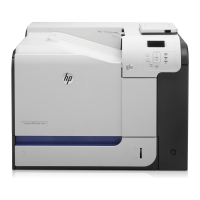After making the S-VOL for Writing enable by using “pairsplit” or “horctakeover” command, you
need to perform the “mcr sysman” command in order to use the S-VOLs for backup or disaster
recovery.
$ pairsplit -g CAVG -rw
$ mcr sysman
SYSMAN> io auto
SYSMAN> exit
$ sh dev dg
Device Device Error Volume Free Trans Mnt
Name Status Count Label Blocks Count Cnt
$1$DGA145: (VMS4) Online 0
$1$DGA146: (VMS4) Online 0
$1$DGA147: (VMS4) Online 0$1$DGA148: (VMS4) Online 0
$1$DGA149: (VMS4) Online 0$1$DGA150: (VMS4) Online 0
$1$DGA151: (VMS4) Online 0
$1$DGA152: (VMS4) Online 0
$1$DGA153: (VMS4) Online 0
Startup procedures using detached process on DCL
(1) Create the shareable Logical name for RAID if undefined initially.
RAID Manager needs to define the physical device ($1$DGA145…) as either DG* or DK* or GK*
by using SHOW DEVICE command and DEFINE/SYSTEM command, but then does not need to be
mounted in RAID Manager version 01-12-03/03 or earlier.
$ show device
Device Device Error Volume Free Trans Mnt
Name Status Count Label Blocks Count Cnt
$1$DGA145: (VMS4) Online 0
$1$DGA146: (VMS4) Online 0
:
:
$1$DGA153: (VMS4) Online 0
$$ DEFINE/SYSTEM DKA145 $1$DGA145:$ DEFINE/SYSTEM DKA146 $1$DGA146:::$ DEFINE/SYSTEM DKA153 $1$DGA153:
(2) Define the RAID Manager environment in LOGIN.COM.
You need to define the Path for the RAID Manager commands to DCL$PATH as the foreign command.
See the section about Automatic Foreign Commands in the OpenVMS user documentation.
$ DEFINE DCL$PATH SYS$POSIX_ROOT:[horcm.usr.bin],SYS$POSIX_ROOT:[horcm.etc]
If RAID Manager and HORCM are executing in different jobs (different terminal), then you must
redefine LNM$TEMPORARY_MAILBOX in the LNM$PROCESS_DIRECTORY table as follows:
$ DEFINE/TABLE=LNM$PROCESS_DIRECTORY LNM$TEMPORARY_MAILBOX LNM$GROUP
(3) Discover and describe the command device on SYS$POSIX_ROOT:[etc]horcm0.conf.
$ inqraid DKA145-151 -CLI
DEVICE_FILE PORT SERIAL LDEV CTG H/M/12 SSID R:Group PRODUCT_IDDKA145
CL1-H 30009 145 - - - - OPEN-9-CM
DKA146 CL1-H 30009 146 - s/S/ss 0004 5:01-11 OPEN-9
DKA147 CL1-H 30009 147 - s/P/ss 0004 5:01-11 OPEN-9
DKA148 CL1-H 30009 148 - s/S/ss 0004 5:01-11 OPEN-9
DKA149 CL1-H 30009 149 - s/P/ss 0004 5:01-11 OPEN-9
DKA150 CL1-H 30009 150 - s/S/ss 0004 5:01-11 OPEN-9
DKA151 CL1-H 30009 151 - s/P/ss 0004 5:01-11 OPEN-9SYS$POSIX_ROOT:[etc]horcm0.conf
HORCM_MON
#ip_address service poll(10ms) timeout(10ms)
127.0.0.1 30001 1000 3000
HORCM_CMD
#dev_name dev_name dev_nameDKA145
You will have to start HORCM without a description for HORCM_DEV and HORCM_INST because
the target ID & LUN are Unknown.
You can determine a mapping of a physical device with a logical name easily by using the raidscan
-find command option.
(4) Execute ‘horcmstart 0’.
$ run /DETACHED SYS$SYSTEM:LOGINOUT.EXE /PROCESS_NAME=horcm0 -
_$ /INPUT=VMS4$DKB100:[SYS0.SYSMGR.][horcm]loginhorcm0.com -
_$ /OUTPUT=VMS4$DKB100:[SYS0.SYSMGR.][horcm]run0.out -
_$ /ERROR=VMS4$DKB100:[SYS0.SYSMGR.][horcm]run0.err
%RUN-S-PROC_ID, identification of created process is 00004160
24 Installation requirements
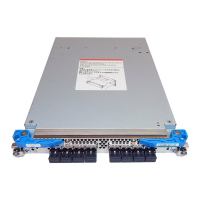
